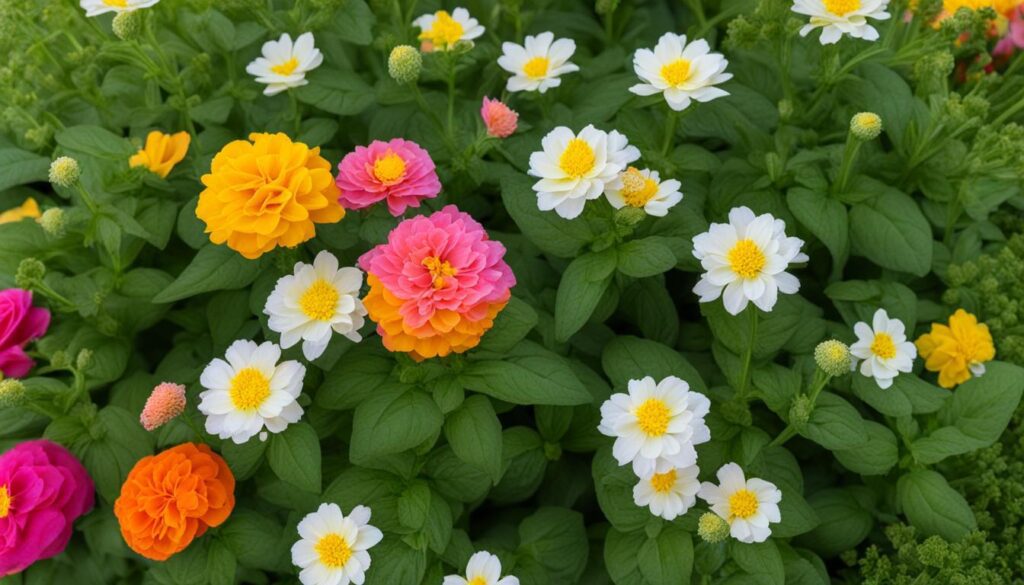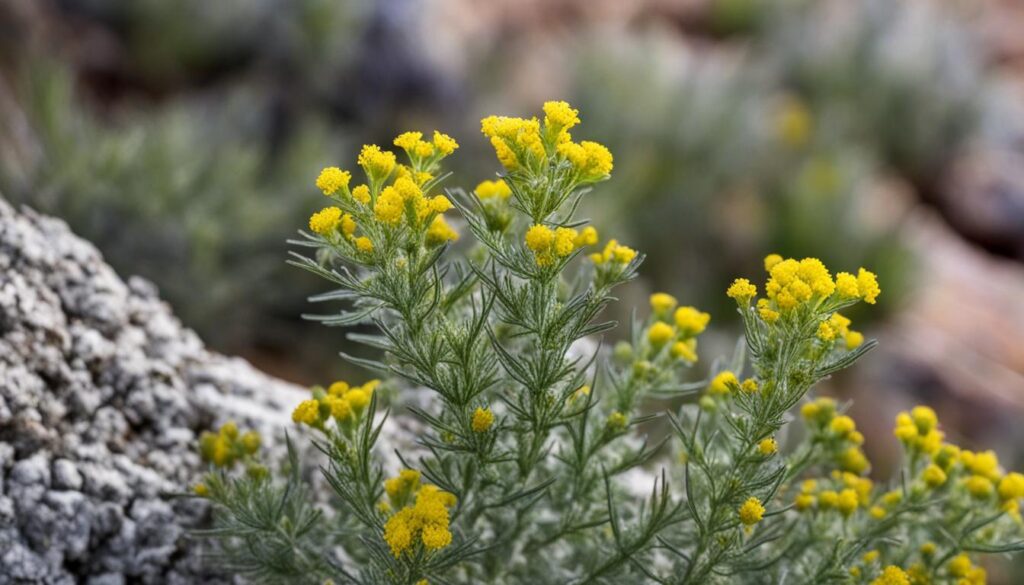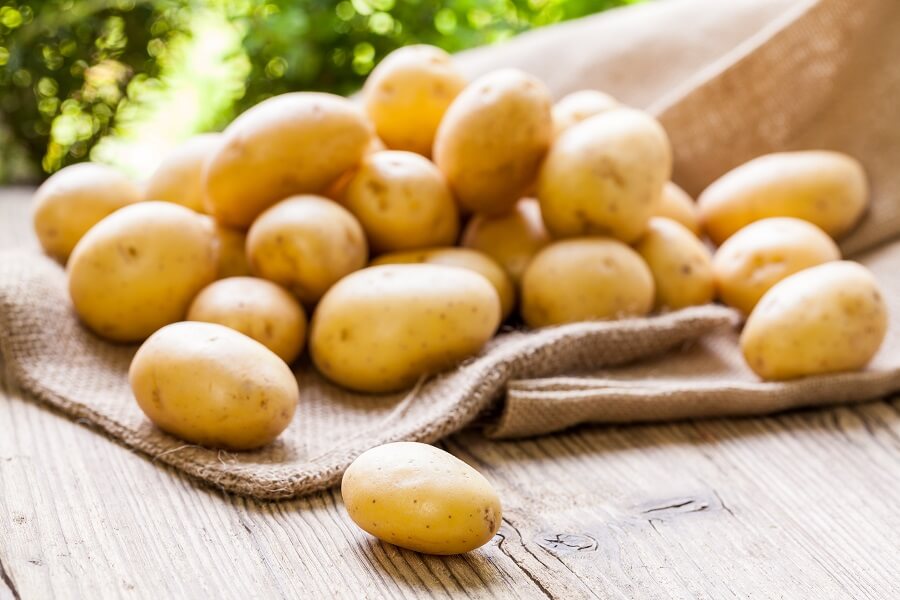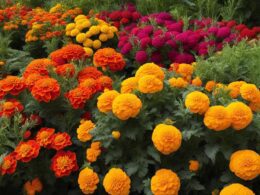Bees are vital to our ecosystem as pollinators, but there are instances where you may need to keep them away from certain areas. Whether it’s due to allergies or the presence of young children who fear insects, having a bee-free zone can be a necessity. In this guide, we will explore the concept of using plants that repel bees and provide you with a comprehensive list of bee-repelling flora.
Key Takeaways:
- Using plants that repel bees can help create a bee-free zone in specific areas.
- Basil, citronella, geraniums, marigolds, and roses are some plants known for their bee-repelling properties.
- Wormwood and other herbs like mint and eucalyptus can also deter bees, but be cautious as they may repel other beneficial insects as well.
- Understanding bee attraction factors, such as flower color, smell, nectar, and pollen stores, can help you choose bee-repellent plants strategically.
- Creating a bee-free garden involves a balance between keeping certain spaces bee-free and supporting the essential pollination process.
Basil, Citronella, Geraniums, Marigolds, and Roses
When it comes to creating a bee-free zone in your garden, certain plants have properties that repel bees and make them less likely to visit. These plants can be a great choice if you want to enjoy your outdoor space without the presence of bees.
One such plant is basil. When not in bloom, basil emits a scent that insects, including bees, do not seem to care for. So, consider adding basil to your garden to deter bees naturally.
Citronella, a popular insect-repelling plant known for repelling mosquitoes, can also repel bees. It’s an excellent choice if you want to keep both mosquitoes and bees away from your garden.
Geraniums, with their strong scent, are another option for deterring bees. The scent is off-putting to many insects, making geraniums an effective plant for creating a bee-free zone. Additionally, geraniums contain very little pollen, further reducing their appeal to bees.
Marigolds are another plant that can discourage stinging insects, including bees, from staying in the area. Their pungent odor acts as a repellent, making them a natural choice for bee deterrence.
Roses, especially red or less scented varieties, are generally not attractive to honey bees. So, if you prefer a bee-free garden, opting for roses that are less appealing to bees can be a good strategy.
Summary:
- Basil, when not in bloom, emits a scent that is not favored by insects, including bees.
- Citronella, known for repelling mosquitoes, can also repel bees.
- Geraniums have a strong scent that is off-putting to many insects, including bees.
- Marigolds have a pungent odor that can discourage stinging insects, making them a natural choice for deterring bees.
- Roses, especially red or less scented varieties, are not very attractive to honey bees.
Wormwood and Other Options
When it comes to plants that repel bees, wormwood is a standout. Its strong odor is not favored by bees, making it an effective bee-repelling herb. However, it’s essential to consider the broader implications of using bee-repelling plants. Bees are crucial pollinators, and planting herbs like wormwood may also deter other beneficial insects. To strike a balance, consider using these herbs strategically in areas where you specifically want to keep bees away.
Another option to deter bees is mint, which has a strong aroma that can help deter bees and other insects. Eucalyptus is also known for its ability to repel bees, making it a suitable choice for creating a bee-free zone. Additionally, certain citronella varieties can help keep bees away from your garden. However, it’s important to remember that bees play a vital role in the ecosystem, so be mindful of their overall impact when using these plants.
Using Bee-Repelling Herbs Strategically
If you’re considering using bee-repelling herbs like wormwood, mint, eucalyptus, or citronella, it’s crucial to plan their placement strategically. By placing these plants in specific areas, you can keep bees away from certain zones while still allowing them to access other areas for pollination. This way, you can protect areas where you or your family spend the most time while ensuring bees can continue their essential pollination work.
“Using bee-repelling herbs in the garden can be an effective way to create a bee-free zone while still supporting the overall ecosystem. Just remember to use them strategically and consider the impact on other beneficial insects.”
Balance and Consideration
Creating a bee-free garden requires striking a balance between your specific needs and the needs of the ecosystem. While there are plants like wormwood, mint, eucalyptus, and citronella that can help repel bees, it’s essential to consider their broader impact. Bees play a vital role in pollination, and protecting them is crucial for the health of our environment. By using bee-repelling herbs strategically and considering their impact, you can create a safe environment while still supporting the overall ecosystem.
Understanding Bee Attraction Factors
Bees are remarkable creatures that play a vital role in our environment as pollinators. To effectively repel them, it’s important to understand the factors that attract bees to certain plants. By knowing their color and smell preferences, as well as their attraction to specific flower characteristics, you can strategically select plants that discourage bees from visiting your garden.
When it comes to color, bees are particularly drawn to flowers that are purple, violet, or blue. These hues appear vibrant to bees and signal a potential nectar and pollen source. However, it’s important to note that red flowers may appear green to bees, making them less attractive. So, if you want to keep bees away, consider planting flowers in shades of red that are less likely to attract them.
Bees have a strong sense of smell, which guides them to flowers with inviting fragrances. Lavender, chamomile, and rosemary are just a few examples of plants that emit scents that bees find appealing. By incorporating these aromatic plants into your garden, you can help deter bees naturally.
In addition to color and smell, bees are also attracted to flowers with ample nectar and pollen stores. They prefer flowers with wide landing platforms and shallow, tubular corollas, as they make it easier for bees to access the nectar and pollen. By selecting plants with different flower shapes and sizes, you can limit bee attraction and create a bee-free zone in specific areas of your garden.
Understanding these bee attraction factors allows you to make informed decisions when choosing plants for your garden. By strategically selecting flowers that repel bees, you can create a peaceful outdoor space while still supporting the crucial role bees play in pollination.
Summary:
- Bees are attracted to specific flower characteristics such as color, smell, nectar, and pollen stores, and flower shape.
- Flowers that are purple, violet, or blue are more attractive to bees, while red flowers may not be as appealing.
- Bees are drawn to flowers with fragrances like lavender, chamomile, and rosemary.
- Flowers with rich nectar and pollen stores, as well as wide landing platforms and shallow, tubular corollas, are attractive to bees.
- By understanding these factors, you can select plants that repel bees and create a bee-free garden while still supporting pollination.
Creating a Bee-Free Garden
While it may be challenging to completely repel bees from an outdoor space, there are natural ways to deter them and create a bee-free zone in certain areas of your garden. It’s important to find a balance between maintaining a safe environment and supporting the essential pollination process that bees facilitate.
To deter bees naturally, consider incorporating non-flowering plants, evergreen shrubs, or foliage plants in the areas where you want to keep bees away. These types of plants, which do not produce flowers, are less likely to attract bees and can help create a bee-free environment.
Another strategy to consider is practicing companion planting. By strategically planting bee-repelling plants near areas you want to be bee-free, you can help deter bees from those specific spaces. Additionally, avoid planting flowers that are known to attract bees in close proximity to the areas you want to keep bee-free.
Remember to do your research and choose plants that align with your goals and the needs of your garden. By incorporating non-flowering plants, practicing companion planting, and being mindful of the flowers you choose, you can create a bee-free garden while still supporting the overall health of the ecosystem.
What are the Most Effective Plants for Repelling Bees?
If you’re looking to keep bees away, consider planting specific plants bees don’t like such as citronella, eucalyptus, marigolds, and mint. These strong-smelling plants can help deter bees from your garden or outdoor space. Try incorporating these natural repellents to keep bees at bay.
FAQ
Can plants really repel bees?
Yes, certain plants emit fragrances or have characteristics that can repel bees and make them less likely to visit.
Which plants repel bees?
Basil, citronella, geraniums, marigolds, roses, and wormwood are all plants that can repel bees.
Are there any other options besides these plants?
Yes, other options include mint, eucalyptus, and certain citronella varieties.
What factors attract bees to flowers?
Bees are attracted to the color, smell, nectar, pollen stores, and flower shape of plants.
How can I create a bee-free garden?
You can use non-flowering plants, evergreen shrubs, or foliage plants in areas where you want to keep bees away.











